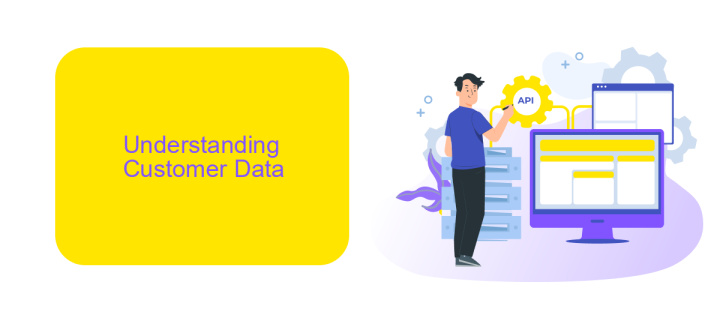Customer Data Integration Process
Customer Data Integration (CDI) is a critical process that enables businesses to consolidate and manage customer information from various sources into a unified view. This integration is essential for enhancing customer experience, improving decision-making, and driving business growth. In this article, we will explore the key steps and best practices involved in an effective CDI process.
Introduction
Customer Data Integration (CDI) is a crucial process for organizations aiming to unify customer information from various sources into a single, comprehensive view. This integration enables businesses to make informed decisions, improve customer experiences, and streamline operations.
- Centralized data management
- Enhanced customer insights
- Improved data accuracy
- Streamlined marketing efforts
One of the tools that can facilitate the CDI process is ApiX-Drive. This service allows seamless integration of various data sources, automating the data flow and ensuring real-time updates. By leveraging ApiX-Drive, businesses can efficiently manage their customer data, reduce manual efforts, and focus on strategic growth initiatives.
Understanding Customer Data

Understanding customer data is crucial for any business aiming to enhance its customer relationship management and achieve targeted marketing strategies. Customer data encompasses a wide range of information, including demographic details, purchase history, preferences, and behavioral patterns. This data, when accurately collected and analyzed, provides invaluable insights that help businesses tailor their products, services, and marketing efforts to meet the specific needs and expectations of their customers.
Effective customer data integration involves consolidating data from various sources into a unified system, ensuring its accuracy, consistency, and accessibility. Tools like ApiX-Drive can significantly streamline this process by automating data transfers between different platforms and applications. ApiX-Drive enables seamless integration, reducing manual effort and minimizing errors, thereby allowing businesses to maintain a comprehensive and up-to-date view of their customer base. By leveraging such services, companies can enhance their data integration processes, leading to more informed decision-making and improved customer experiences.
Data Integration Process

The data integration process is crucial for businesses aiming to consolidate customer information from various sources into a unified system. This process ensures that data is accurate, up-to-date, and accessible for analysis and decision-making. Effective data integration helps in creating a comprehensive view of customer interactions, preferences, and behaviors.
- Identify Data Sources: Determine all potential sources of customer data such as CRM systems, social media platforms, and e-commerce sites.
- Data Extraction: Use tools like ApiX-Drive to extract data from these sources efficiently and in real-time.
- Data Transformation: Standardize the data formats and clean the data to remove duplicates and inconsistencies.
- Data Loading: Integrate the cleaned data into a centralized database or data warehouse.
- Continuous Monitoring: Regularly monitor the integrated data to ensure it remains accurate and relevant.
By following these steps, businesses can streamline their data integration process and enhance their customer data management. Tools like ApiX-Drive facilitate seamless integration by automating data extraction and transformation, thereby reducing manual efforts and minimizing errors. This leads to more reliable insights and better customer engagement strategies.
Challenges and Best Practices

Integrating customer data from multiple sources presents several challenges, including data inconsistency, security concerns, and system compatibility. Ensuring that data from different platforms align accurately can be a complex task, often requiring significant effort in data cleaning and normalization.
Another major challenge is maintaining data security and privacy. With increasing regulations like GDPR, companies must ensure that customer data is handled in compliance with legal standards. This often involves implementing robust encryption and access control mechanisms.
- Utilize automated tools like ApiX-Drive to streamline data integration from various sources.
- Implement stringent data governance policies to ensure data quality and consistency.
- Regularly audit and update security protocols to protect customer data.
- Ensure compliance with relevant data protection regulations.
Best practices in customer data integration involve using reliable tools and services that facilitate seamless data transfer, such as ApiX-Drive. By automating data workflows and ensuring robust security measures, companies can effectively manage and integrate customer data, ultimately enhancing their business operations.
- Automate the work of an online store or landing
- Empower through integration
- Don't spend money on programmers and integrators
- Save time by automating routine tasks
Conclusion
The Customer Data Integration Process is a critical component for any business aiming to leverage data for strategic decision-making. By consolidating customer information from various touchpoints into a unified system, companies can gain comprehensive insights into customer behavior, preferences, and needs. This holistic view not only enhances customer experience but also drives targeted marketing efforts and improves operational efficiency.
Implementing an effective integration strategy often involves the use of specialized tools and services. For instance, ApiX-Drive offers a robust solution for automating data integration processes, ensuring seamless connectivity between multiple platforms. With its user-friendly interface and extensive integration capabilities, ApiX-Drive simplifies the complex task of data synchronization, allowing businesses to focus on analyzing and utilizing the integrated data to its fullest potential. In conclusion, a well-executed customer data integration process is indispensable for modern businesses seeking to stay competitive and responsive to market dynamics.
FAQ
What is Customer Data Integration (CDI)?
Why is Customer Data Integration important?
What are the main challenges in Customer Data Integration?
How can automation help in the Customer Data Integration process?
What are the best practices for successful Customer Data Integration?
Time is the most valuable resource for business today. Almost half of it is wasted on routine tasks. Your employees are constantly forced to perform monotonous tasks that are difficult to classify as important and specialized. You can leave everything as it is by hiring additional employees, or you can automate most of the business processes using the ApiX-Drive online connector to get rid of unnecessary time and money expenses once and for all. The choice is yours!


